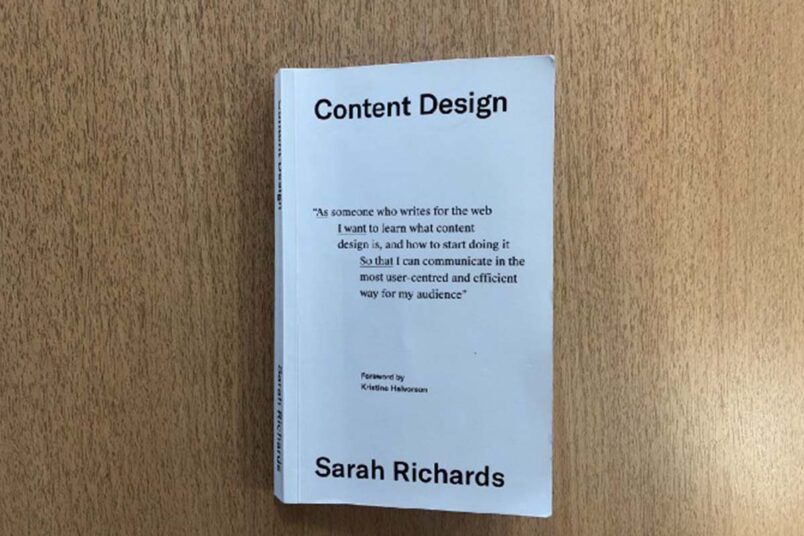
Content Design

At the end of January I went on a 2-day course on ‘Content Design’.
It became quickly apparent to me that this was one of those courses where you can actually picture yourself doing the thing you’re there to learn. For some reason I find most conferences / training courses I attend aren’t like this…why!?
What is content design then?
Well, I’ve actually found this hard to explain to people since getting back but one good way I’ve been able to explain this is by showing a photo from the below tweet. This for me is content design, well executed.
As someone who works as a Digital Manager (whatever that means) this approach is something that we as an organisation have always done to a certain extent…but for us it’s never been a real, tangible process.
Content design is an approach to help produce user-centred, evidence-based content.
What I like so much about Content Design as a process is that it outlines a simple step-by-step approach to producing good content.
At this point I want to recommend 2 things — because I’m going to stop blabbing about a topic I’ve only just really started looking into.
Firstly buy this book by Sarah Richards — it’s a short, simple book giving you the perfect introduction to Content Design.
Next, if you can find the time and budget — go on her 2-day training course, you won’t regret it.
How does it work in practice?
If you’re like me, it won’t take you long to realise this approach could vastly improve what you’re doing in your own organisation.
It has however taken me a month or so to figure out how exactly to implement it…
My approach has been to pick one piece of content (information on Advance Decisions) at our charity, and apply the ‘Content Design’ process in full. I want to see it in action.
My advice is to just get stuck in!
At the time of writing, we’re just coming to the end of the first stage — known as ‘Content discovery and research’…
It’s been a fascinating process — one that’s probably only taken 2 or 3 full days of my time. For sure, there are certain bits of information we already knew in isolation — but there is something to be said for stitching it all together.
I’m planning on doing a separate blog just on our findings of this discovery, but even without jumping the gun I know this will improve our content.
Certain assumptions we’d made when writing the original content have essentially been busted by the evidence. And evidence my friends trumps hunches.
I have no doubt, that if we apply the content design process to all the information we provide at Compassion in Dying — it will improve it. Simply because it will be more user-centred and evidence-based.
Onwards and upwards!